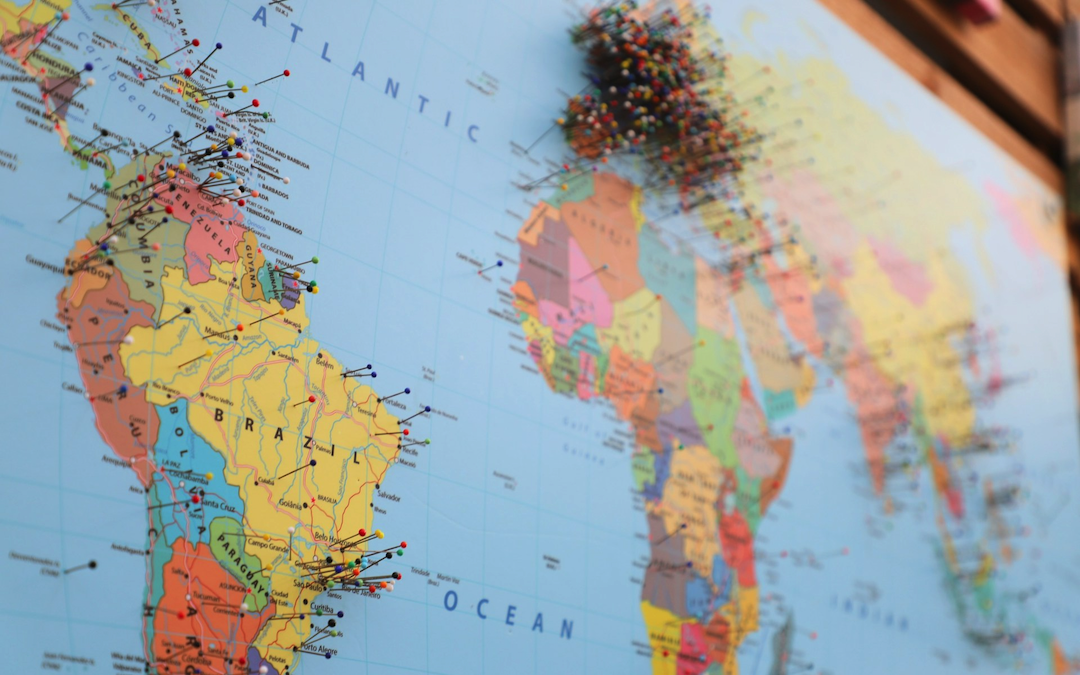
Ownership of global positioning devices (GPS) is high in the US with an estimated 170 million Americans in possession of at least one GPS or other location-tracking product besides their phones. Worldwide, the GPS tracking devices market continues to flourish and is predicted to grow by more than 12% in the period 2022-2028 according to Research Corridor. Indeed, geolocation technology has experienced tremendous growth and has evolved in recent years due to advancements in hardware and software and increased consumer demand. In particular, its dramatic transformation of the tourism industry empowered travelers and businesses to experience and operate travels differently.
Maps, Guidebooks, and Word of Mouth (WOM)
In the early days, tourism relied heavily on the use of paper maps and guidebooks to navigate unknown places and territories. For example, some of the earliest forms of tourism were religious pilgrimages to sacred sites. They would travel to these places using different methods to navigate their environment.
Stories, songs, and poems often include geographic info, landmarks, and routes that would be passed down from generation to generation. When traveling, people relied on prominent features and natural landmarks such as mountains, rivers, and coastlines. The sun, moon, and stars were used for guidance, especially by those using the sea. Trees, rocks, and hills also serve as markers. Early representations of spatial information include cave paintings which feature landscapes and later on, Babylonian clay tablets contained early forms of maps.
During the Middle Ages, map making progressed when portolan charts were created for sea navigation. As years passed, the Age of Exploration saw the development of more accurate and detailed maps for maritime navigation. Explorers and travelers also documented their journeys which were later used as the basis for guidebooks. One of the first guidebooks was ‘Murray’s Handbooks for Travellers’, launched by British publisher John Murray. Today, there are several guidebooks used for tourism such as Lonely Planet, Fodor’s, Bradt Travel Guides, and Arthur Frommer. Side by side, maps also became more detailed, accurate, and specialized with tourist maps highlighting attractions, transportation, and lodgings.
Digital Age Revolutionized Travel Planning
The introduction of GPS technology was a significant turning point because devices with this capability provided real-time location enabling users to find their way in unfamiliar territory with ease. Say you want to plan a few days in the UK and would like to see the most popular historical destinations within a specified time frame. You only need to use your smartphone which has internet connectivity to check where you can go. This development promoted more spontaneous exploration and independent travel. Hence, geolocation-based tourism transformed the way travelers access info, create itineraries, and discover new experiences.
Furthermore, mobile apps offered updated information on attractions, transportation, eating places, and events that were often tailored to the user’s IP location. Apps analyze user behavior and preferences customizing suggestions for activities, dining, and accommodation. Interactive maps which contained details, reviews, and user-generated content enhanced the travel experience. An important feature of the digital age is the use of augmented reality (AR) which enhances explorations of tourist destinations.
Geolocation technology is also behind the hyper-personalization and predictive analytics in tourism. Hence, through analysis of travel patterns and preferences, platforms may anticipate what the traveler needs and offer personalized recommendations. Smartwatches and fitness trackers deliver valuable insights into traveler behavior allowing tourism providers to tailor recommendations and services. Cities and tourist attractions tap the power of geolocation data to optimize resources and enhance visitor experience.
Future Scenario
Geolocation technology will continue to drive immersive experiences through augmented reality (AR) and virtual reality (AR). Visitors can expect more accurate virtual tours of attractions and AR guides. Thus, travelers expect more localized content catering to their specific interests and needs. Advances in AI and machine learning will help in anticipating the needs and preferences of travelers with greater accuracy.
As a result, geolocation will make travel more convenient, informative, immersive, and enjoyable while local businesses will benefit from location-based advertising and services. Furthermore, generated geolocation data can help authorities and businesses make informed marketing, infrastructure, and services decisions while real-time location ensures traveler safety and offers timely info about local conditions.
All in all, geolocation has evolved dramatically from basic navigation tools in the early times to sophisticated systems today that provide personalized, real-time travel experiences. These developments shape the tourism industry and make travel more accessible, fun, sustainable, and safe.
Share this post
Leave a comment
All comments are moderated. Spammy and bot submitted comments are deleted. Please submit the comments that are helpful to others, and we'll approve your comments. A comment that includes outbound link will only be approved if the content is relevant to the topic, and has some value to our readers.




Comments (0)
No comment